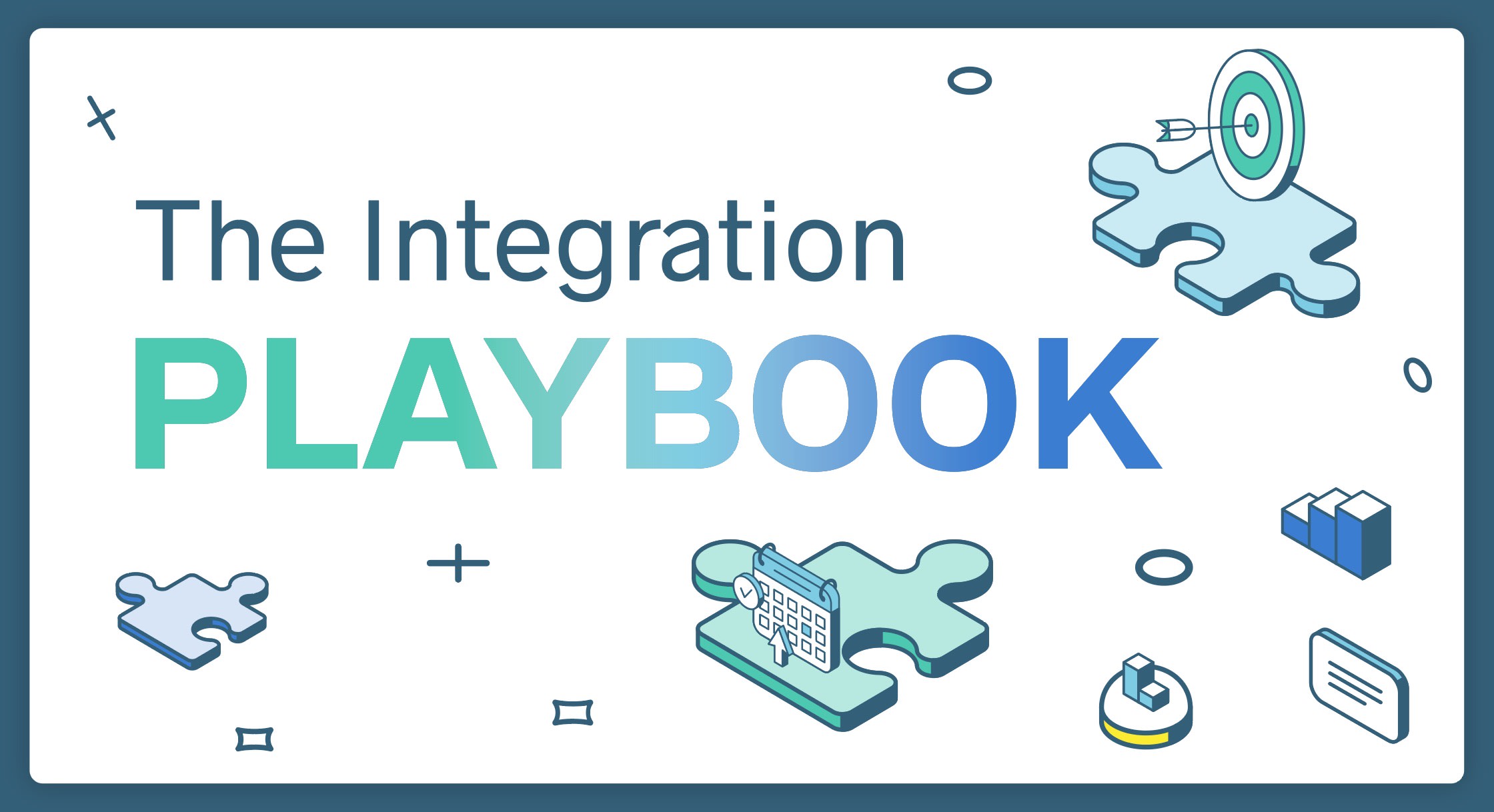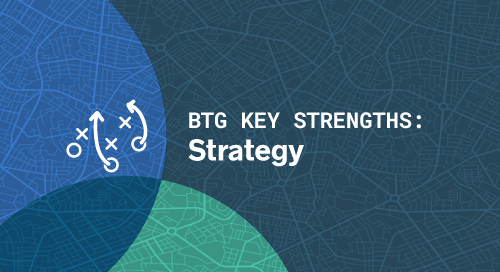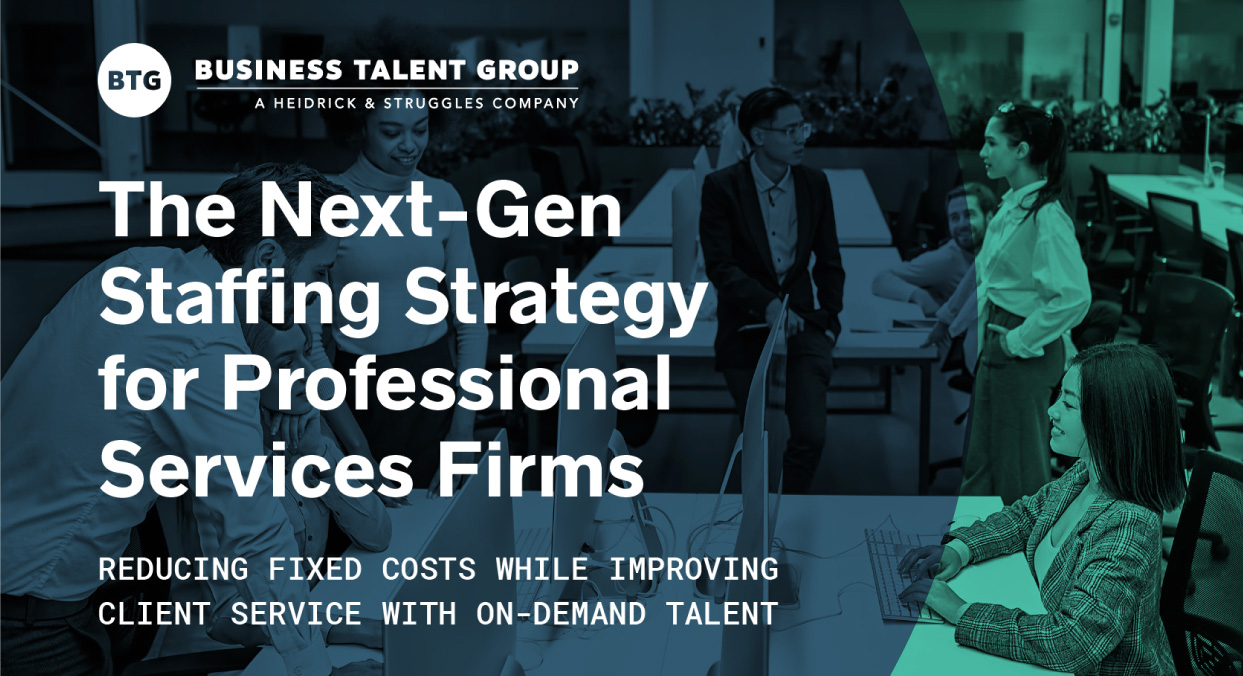By now, the research is clear: organizational culture has a clear link to business performance. Culture drives employee engagement, impacts companies’ ability to attract talent, influences the efficiency of decision-making, and affects many other factors that play a role in short and long-term financial success.
What has made it a new point of attention, though, is the massive downside risk of ignoring or underestimating culture. We need think no further than the reputational damage caused by tainted cultures in the Wells Fargo sales scandal, the VW emissions fiasco and the Vale mining disaster. Moreover, in the war for talent, companies know that younger and highly mobile workers want to be associated with organizations whose cultures they respect and can relate to.
The ICD 2019 Director Lens Survey found that over 60% of respondents say that they are spending the right amount of time discussing organizational culture. But only 34% indicated that they have agreed on measures to improve culture and discuss them frequently.
This is why, in May and June of 2019, the ICD, in partnership with Mobilis Strategic Advisors, the Governance Professionals of Canada, and the David and Sharon Johnston Centre for Corporate Governance, curated five workshops with experienced corporate directors and governance professionals in Montreal, Toronto, Calgary and Vancouver to better understand how companies and their boards can go about governing corporate culture.
Here’s what we learned during those sessions—and some practical tools for executives who are looking to contribute to the governance of culture.
PART 1: UNDERSTANDING CULTURE
Academic researchers define culture as a set of shared beliefs, values, norms and assumption that influence behaviour within an organization. Let’s start by unpacking what that means.
What is organizational culture?
Put most simply: culture is how we get things done.
Other definitions of organizational culture that came up during our sessions included:
- How the strategy will get done
- How people behave when nobody is looking
- A set of values as expressed by behaviors
Culture has visible and invisible components. Visible ones include actions, communications, processes, behaviours and reporting relationships. Like an iceberg, beneath the surface lie the more invisible ones like values, feelings, beliefs, assumptions and cultural norms.
All these components and their impact are identifiable, measurable and trackable: culture is most decidedly not soft!
Why is culture important?
If an organization’s culture is “how” strategy is executed, then executives have a clear responsibility for ensuring that the culture is healthy and effective.
In other words, critical aspects of organizational culture—from processes, incentives, behaviours, and resources—must be aligned behind the strategy, which means that corporate leadership is responsible not only for ensuring that the strategy is set but also that it is being implemented effectively.
But there is a topic that comes before strategy, and that is PURPOSE.
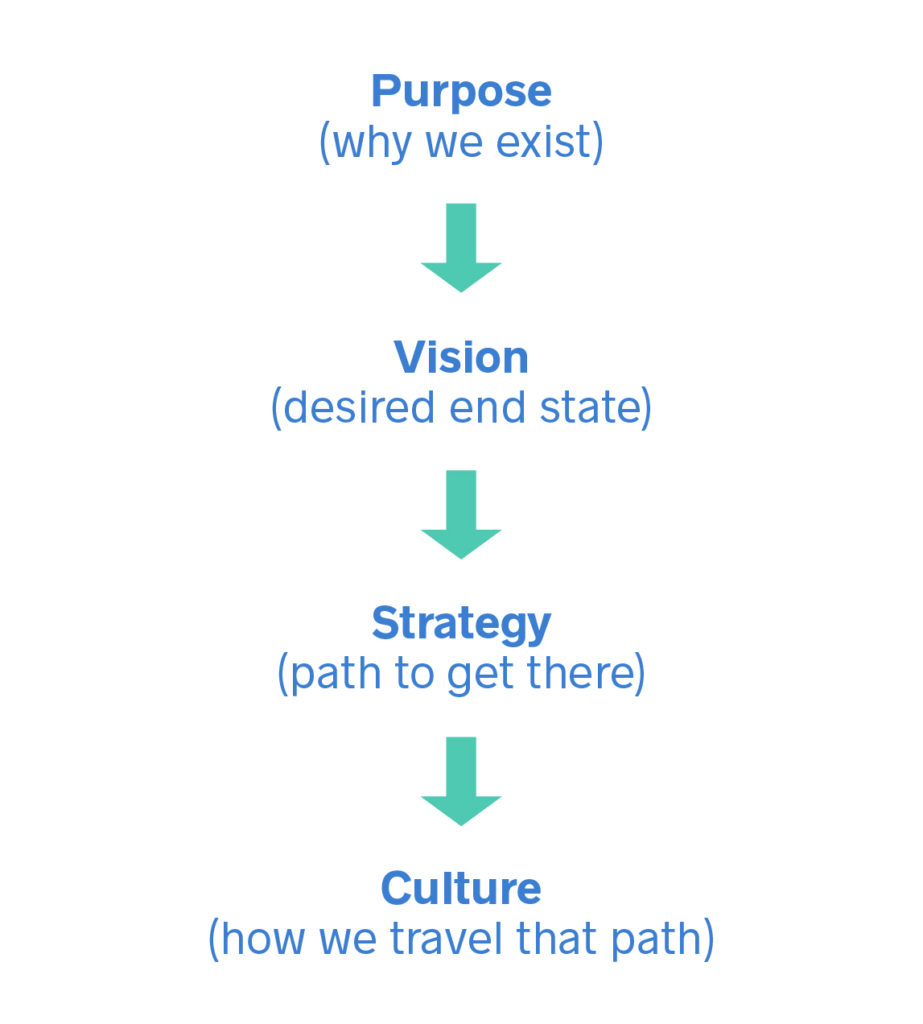
As Isabelle Courville, a workshop participant and Chair of the Board of Canadian Pacific Railway, noted, “In France, there is a regulatory requirement to define the raison d’être—the purpose of a company. This definition comes before the strategic exercise and is broader than the definition of Mission-Vision-Values.”
A clear purpose—why a company exists and what it is there to do—is the starting point for a successful company and is closely tied to its strategy and culture.
Culture both informs explicit and implicit discussions of strategy and how to achieve that strategy, but it must also be monitored against the guidepost of organizational purpose. It is important to clearly see how strategic decisions might impact a company’s culture or purpose and to work towards creating better internal alignment—and incentives—with a company’s purpose, vision, strategy and culture.
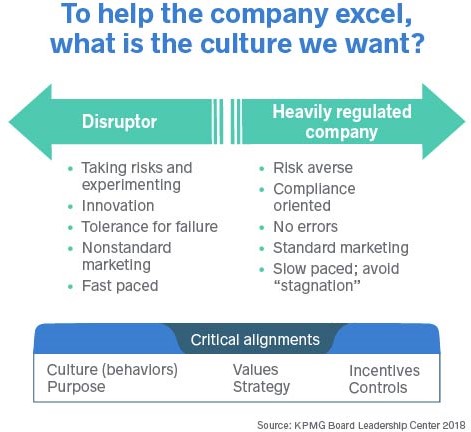
Why is culture so hard to assess?
Workshop participants expressed frustration at the difficulty of understanding an organization’s culture from the perspective of the boardroom. But it’s important to note that even internal executives struggle with this issue. In fact, only 28% felt they understood their organization’s culture, according to Deloitte research.
Here are the most common barriers to understanding organizational culture:
- Culture is perceived as difficult to measure: It is often seen as a “soft” issue. Robert Tessier, Chair of the Caisse de dépôt et placement du Québec pointed out, “It’s hard to define culture and therefore to measure it. You understand what it is the day you decide to change it!”
- It’s hard to find the right business moment: Isabelle Courville, Chair of the Board of Canadian Pacific Railway, remarked: “When a company is in a crisis, going through a turnaround, or during an intense M&A phase, there’s no time allocated to thinking about culture.”
- It’s hard to find time, period: Corporate agendas are already so packed that there is little room to talk about strategy, let alone culture.
- Boards may not have access: Several board members complained that the legendary “plant or office tour”— during which a dozen or so board members are taken through highly choreographed meetings with staff and management—was the only way they could connect directly with an organization. Unless boards have a strong relationship with the CEO, they will have little ability to understand how things are getting done.
- Systemic issues can be hard to recognize: While companies have an obligation to dig into fraud or misconduct, Jim Goodfellow, past Vice Chair of Deloitte Canada, suggested: “it is not obvious how to distinguish between what is cultural or systemic and what is an isolated occurrence.”
- There may be multiple—and even competing—cultures: In many complex organizations, multiple business units and geographic diversity can lead to multiple cultures. Noted one participant: “Within a bank, the culture of the investment banking group will differ significantly from that of the commercial lending arm. If our organization is doing business in the U.S. or Europe, the cultures of those entities will differ, as well.”
- Cultures are not static: Organizational culture fluctuates and must evolve to meet the demands of a changing world. Kotter and Heskett’s study on corporate culture and performance found that firms with cultures that could more easily adapt to change were associated with stronger financial results.
PART 2: HOW TO ASSESS, TRACK, AND IMPROVE ORGANIZATIONAL CULTURE
Despite these barriers, the participants offered powerful guidance on how to understand an organization’s current culture, measure it, improve it, and maintain effective oversight.
Understand the current culture
There are several ways executives can get a handle on the current culture.
- Increase access to management and employees. First, a frank conversation must take place amongst the Board Chair, the CEO, and other senior executives regarding the intent to pay attention to culture—and why it is important. This discussion might address:
- Finding a way to gain more exposure to employees throughout the organization in informal settings
- Scheduling opportunities for managers to be in contact with the board or committees
- Inviting staff from various levels to board dinners
- Make culture part of normal business. It’s not easy to add culture to an already packed corporate agenda, but there are several ways to ensure that it is addressed on a regular basis.
- Integrating culture oversight into board committee mandates (e.g. audit, strategy, compensation, nominating and governance committees) and encouraging committee chairs to build trust-based relationships with their executive counterparts
- Agreeing that any time the company discusses its strategy, they talk about culture
- Requesting the corporate secretary/governance professional puts culture on the agenda at a regular cadence and he/she helps guide discussions
- Commit to measuring culture. There are several different ways to measure organizational culture. The most important thing is to find the one that works for your company—and then commit to using it.
- The Barrett Values Centre has developed powerful Cultural Transformation Tools® that can rapidly measure cultural health, assess sub-cultures, and track differences by level, age, function, business unit, location, and more
- Online “pulse surveys” can be used on a regular basis to track engagement and job satisfaction in real time
- Traditional engagement surveys can also be useful, but the questions must reflect the desired strategic values and behaviours, and the results must be tracked over time
It’s also important to note that culture and engagement—while related—are not equivalent. Engagement measures an individual’s emotional and intellectual connection and commitment to the company, while culture represents shared beliefs, values and ways of doing things.
Measure and track cultural traits
Once you’ve understood your organization’s culture, the next step is to develop the disciplines and measures to keep track of it. One way to visualize this is as a series of steps, beginning with the areas of culture that present the highest risk to the company:
![]()
- Agree on the types of risks your company is most likely to face. Be sure to consider these risks in the context of your purpose and strategy—and identify the ones that could do the most damage to the organization.
- Agree on metrics that are associated with those risks. Once you’ve assessed your risks, you should identify the appropriate metrics to track and report over time.
- Workforce risk metrics might include:
- Succession plans
- Staff turnover and absenteeism rates
- Grievance data
- Exit interviews
- Diversity and inclusion data
- Training data
- Recruitment policies and practices
- Reputational risk concerns could be tracked via:
- Customer complaints
- Net Promoter Scores
- Market share
- Promotion decisions
- Remuneration policies and practices, particularly the structure of financial and non-financial incentives
- Safety, ethical, or environmental risk indicators could include:
- Incidences of breaches of regulatory matters or codes of ethics—especially by star employees
- Health and safety records, including near-miss reporting
- Whistleblowing/speak up incidents
- Control failures and instances of poor compliance
- Fines
- Workforce risk metrics might include:
- Establish a regular set of procedures to track and investigate risks, fraud, and misdeeds. This can involve putting in place an ombudsperson, defining whistleblower policies, or ensuring that everyone adheres to the organization’s code of conduct. This code of conduct should clearly articulate the values and behaviours needed to achieve the organization’s strategies; regular pulse surveys can be used to track employees’ views regarding adherence to the Code.
Link crisis prevention and mitigation strategies to your values to help guide responses and investments. Culture measurement can also be added to the due diligence and post-merger integration process.
Define the ideal culture
Perhaps the most comprehensive approach that a company can take to defining an “ideal culture” is to develop a good understanding of the connections between why a company exists (its purpose), its desired end state (its vision), the path it chooses to get there (its strategy) and to work with management to define how it chooses to travel that path (its culture). This involves specifying the cultural attributes—beliefs, norms, behaviours, and so on—that will support the successful implementation of strategy.
The rationale for doing so lies in the growing belief that many of the companies that have been successful over a long period of time have a “purpose” beyond profit. Think Unilever or J&J or CN or the Business Development Bank of Canada. The leadership of these organizations have worked hard to think through the values and sense of meaning that underlie their strategies.
 | Offering everyone a better way forward |
 | Founded in 1881 to connect Canada, today we deliver transportation solutions that connect North America and the world |
 | To help accelerate the world’s transition from a fossil fuel economy towards a sustainable energy future |
 | “Resourcing the world” through its environmental services business |
 | To make sustainable living commonplace: helping to create a world where we can all live well and within the natural limits of the planet |
While it’s difficult to prove, one could argue that defining a meaningful purpose and supporting it with both a robust strategy and a strong operating culture has led these companies to more successful attraction and retention of talent, better motivation and engagement, more satisfied customers, greater attention to risk factors, stronger leadership, and more focus on achieving business goals.
Maintain effective go-forward oversight
Once an organization’s core values and purpose have been established, boards and leadership must make sure they are never compromised. This means that if there is any danger of the organization—or parts of it—slipping into a toxic culture, management takes action to mitigate those risks and returns the organization or subculture to a healthy status.
What are some of the initiatives that companies can take to retain oversight of a healthy organizational culture?
- Make cultural implications a direct part of your strategy review. If the strategy changes, make sure your company’s culture can support and enable it.
- Update committee charters. In particular, make sure that HR, Audit, Governance, and Strategy charters include responsibility for “culture oversight.” HR may also tie performance evaluations and promotions to established cultural values.
- Communicate culture expectations with the board and senior management. Everyone at the company must walk the walk of the Code of Conduct. There should also be transparency about actions that will be taken to address transgressions.
- Consider tying executive compensation to the cultural dimension of achieving the strategy. Compensation may also be clawed back as compensation for breaches.
- Benchmark your company’s culture. Resources like ICD, GPC, or third-party strategic advisors can help.
CONCLUSION
Insight from the workshop participants, supported by academic and other research, shows that a thriving culture is no longer a “nice to have.” Instead, culture has far-reaching impacts on the effective implementation of strategy and on related outcomes, including employee engagement, customer satisfaction, and profitability. As such, culture now requires proactive investment and oversight.
Assessing a company’s culture requires a transparent relationship between its board and its senior executives, as well as a formalized approach to gathering information on the most significant cultural indicators. Boards should require that management provide them with a description of the cultural attributes that enable the organization to deliver on its strategy. Management should commit to understanding their company’s culture at all levels of the enterprise.
Organizational culture should not be tracked in isolation on the corporate agenda. Instead, it should be contemplated in the context of other activities, including strategy, risk, CEO selection and evaluation, compensation, and shareholder communications.
GET THE SKILLS YOU NEED
Thousands of independent consultants, subject matter experts, project managers, and interim executives are ready to help address your biggest business opportunities.
About the Author
More Content by Mary Larson and Kevin Joy








